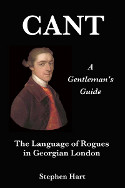THE ORIENTAL CLUB
Several years ago, the high dignitaries of the Church and Law kept the Alfred to themselves; but this would not do: then they admitted a large number of very respectable good young men, who were unexceptionable, but not very amusing. This, again, would not do. So, now the Alfred joined, 1855, the Oriental, in Hanover-square. And curiously enough, the latter Club has been quizzed equally with the Alfred. In the merry days of the New Monthly Magazine of some thirty years since, we read:—"The Oriental—or, as the hackney-coachmen call it, the Horizontal Club—in Hanover-square, outdoes even Arthur's for quietude. Placed at the corner of a cul-de-sac—at least as far as carriages are concerned, and in a part of the Square to which nobody not proceeding to one of four houses which occupy that particular side ever thinks of going, its little windows, looking upon nothing, give the idea of mingled dulness and inconvenience. From the outside it looks like a prison;—enter it, it looks like an hospital, in which a smell of curry-powder pervades the 'wards,'—wards filled with venerable patients, dressed in nankeen shorts, yellow stockings, and gaiters, and faces to match. There may still be seen pigtails in all their pristine perfection. It is the region of calico shirts, returned writers, and guinea-pigs grown into bores. Such is the nabobery, into which Harley-street, Wimpole-street, and Glocester-place, daily empty their precious stores of bilious humanity." Time has blunted the point of this satiric picture, the individualities of which had passed away, even before the amalgamation of the Oriental with the Alfred.
The Oriental Club was established in 1824, by Sir John Malcolm, the traveller and brave soldier. The members were noblemen and gentlemen associated with the administration of our Eastern empire, or who have travelled or resided in Asia, at St. Helena, in Egypt, at the Cape of Good Hope, the Mauritius, or at Constantinople.
The Oriental was erected in 1827-8, by B. and P. Wyatt, and has the usual Club characteristic of only one tier of windows above the ground-floor; the interior has since been redecorated and embellished by Collman.
John Timbs
Club Life of London Vol. I
London, 1866

